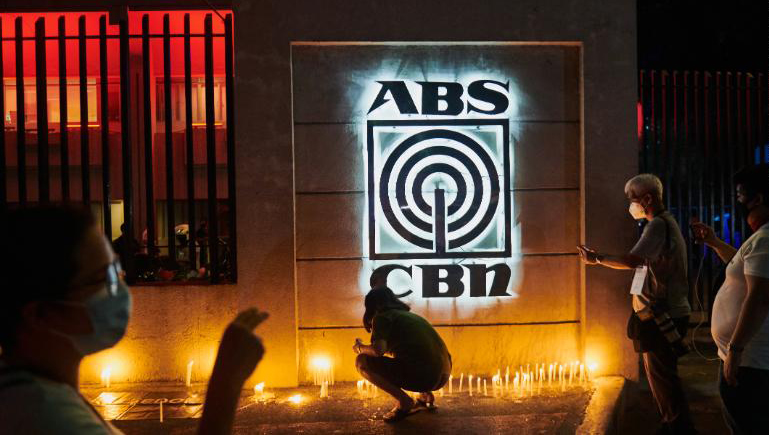The world of international media and politics was recently shaken by a historic announcement that sent an immediate, powerful wave of emotion across the globe. After five years of operating under the immense pressure of its closure, ABS-CBN Corporation, the Philippines’ largest and most enduring broadcasting network, broke its silence with news that millions of Filipinos around the world had long considered an impossible dream: The Kapamilya Network is officially returning to free television!
The announcement was delivered during a prime-time broadcast that instantly became a legendary moment in Philippine media history. As the familiar, signature sound of the network’s jingle, “In the Service of the Filipino Worldwide,” resonated in living rooms, an emotional wave of simultaneous recognition and joy swept across the country and the global Filipino diaspora. The moment was not just a business decision; it was a deeply personal, symbolic resurrection, triggering collective gasps, tears, and cheers as viewers everywhere welcomed back the “Kapamilya” (Family Member) they thought they had lost forever.
From Unthinkable Loss to Unprecedented Resilience
The saga began in 2020, marking one of the most painful chapters in the history of Philippine media. Following a controversial and highly contested decision not to renew its legislative franchise, ABS-CBN was forced to shut down its vital free television and radio operations. The economic impact was immediate and devastating, resulting in the displacement of thousands of employees and the disappearance of iconic, culture-defining programming. For millions of loyal viewers, the loss was akin to a profound bereavement, a gaping hole in the fabric of their daily lives.
Yet, despite the formidable challenges and the intense pressure to simply fade away, the network’s commitment to public service never wavered. Instead of collapsing, ABS-CBN performed a massive, strategic pivot. It aggressively migrated its content to digital and streaming platforms, including Kapamilya Online Live, iWantTFC, and YouTube. This move was crucial; it ensured that essential news, inspirational shows, and quality entertainment continued to reach Filipinos everywhere, regardless of their location. Programs like the flagship news show TV Patrol, the variety powerhouse ASAP Natin ‘To, the popular noontime show It’s Showtime, and the top-rated drama FPJ’s Batang Quiapo continued to be produced, sustained by the unwavering loyalty of a global audience who kept the hope for a physical return alive.
The Tears, The Voices, and The Viral Outpouring
The historic moment came seemingly out of nowhere, in a prime-time slot that immediately captured the nation’s attention. The powerful ABS-CBN logo appeared on screen, followed by the familiar, trusted voices of its veteran news anchors: Karen Davila, Bernadette Sembrano, and Henry Omaga-Diaz. The raw emotion was palpable.
“Good evening, Kapamilya. Once again, we are returning—to the air, to the hearts, and to the homes of every Filipino,” a tearful Karen Davila announced, her voice cracking with the weight of the moment.
The national response was instantaneous and overwhelming. On social media, the hashtag #WelcomeBackABSCBN immediately trended worldwide, racking up over three million mentions on Twitter and Facebook in the first few hours alone. The YouTube livestream of the official announcement registered an astonishing 1.5 million views on the very first day. The public reaction was unanimous in its intensity, echoing the sentiment shared by thousands of netizens: “This is not just a network. This is a home.” For many, the return signaled not just the revival of a company, but the restoration of a cultural landmark and a familiar source of comfort and information.
Beyond Entertainment: A Symbol of Pluralism and Hope
The return of ABS-CBN is analyzed by experts as something far more profound than a simple business comeback. It is being heralded as a vital sign of the revival of media pluralism in the country. Losing a network of that size and scope created a vacuum, limiting the diversity of voices and perspectives available to the public. Media studies experts suggest that the network’s return reopens the public discourse, ensuring that more narratives are heard, more investigative journalism is given space, and citizens can exercise a broader freedom in accessing critical information.
Professor Liza Cruz, a media analyst from the University of the Philippines, framed the event as a victory for enduring democratic principles. “ABS-CBN is part of every Filipino’s shared history. Their return is profound proof that dedication to public service and the pursuit of truth can never be completely silenced, even by the greatest institutional challenges,” she stated, underscoring the resilience inherent in the network’s mission.
The emotional resonance was mirrored by the network’s vast array of stars. During a live episode of the variety show ASAP Natin ‘To, the studio erupted in cheering when veteran singer Martin Nievera simply declared, “We’re home!” On the set of It’s Showtime, the popular host Vice Ganda passionately added, “With every ‘It’s Showtime!’ we shouted during our toughest times, we knew deep down that one day we would be back on the air. And now, it’s truly happened!” Even the new generation of Kapamilya stars, including Francine Diaz, Donny Pangilinan, and Belle Mariano, expressed their awe and joy, recognizing that they are now part of a truly historic moment in their country’s media landscape.
A Step Towards the Future, Not a Return to the Past

Crucially, this is not merely a nostalgic retreat into the past. Carlo Katigbak, ABS-CBN’s President and CEO, positioned the comeback as a bold step forward, heralding a new era for the network. He announced that the return to free TV brings with it a commitment to be stronger, more innovative, and fundamentally more open to the digital future.
“This is not a return to the past. This is a decisive step toward the future,” Katigbak asserted. “We will continue to serve Filipinos on any platform, at any time, ensuring our content is accessible across the entire digital ecosystem.”
The network’s ambitious future plans include strengthening its renewed partnerships with various digital platforms, enhancing its commitment to regional programming to ensure local voices are heard, and broadening the accessibility of its vital news and entertainment content. Furthermore, there are thrilling unconfirmed reports that some of the most iconic Kapamilya programs—including the celebrity talk show The Buzz, the reality franchise Pinoy Big Brother, and the game show Kapamilya Deal or No Deal—are being actively prepared for a comeback as part of the new season’s exciting launch schedule.
For the vast population of Overseas Filipino Workers (OFWs), the emotional impact of the return was arguably the most intense. Separated from their homeland, the network has long been a lifeline, a tangible link to home. From the Middle East to Europe and North America, thousands of OFWs held “virtual celebrations” as they watched the live announcement. As one nurse in Dubai, Lorna G., expressed, “For five years, YouTube was the only way we could truly cope with homesickness. But now that ABS-CBN is back on free TV, it genuinely feels like we’ve finally come home.”
The return of ABS-CBN is more than just a corporate story of recovery; it is a profound testament to the resilience of the Filipino spirit. Amidst monumental challenges, significant losses, and sustained trials, the network has demonstrated that the genuine “Kapamilya spirit”—the dedication to service and the deep connection with the audience—is something that can never be extinguished. In the final, heartfelt message that closed their official comeback broadcast, the network solidified its unbreakable bond with its viewers: “To every home, to every Filipino—we will return and remain, not just on television, but permanently in your hearts. Because of ABS-CBN, we are all Kapamilya.”
